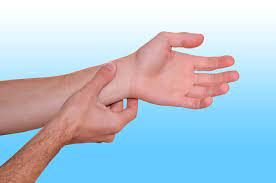4 Reasons Why Pulse Oximetry is Crucial in Health Checkups

Usually, a person’s blood will contain 95% or higher oxygen levels. But, people with sleep apnea or lung diseases will see a 5% decrease from the standard level, which is not healthy. When blood oxygen level goes below 90%, you suffer from hypoxemia. Your doctor uses a pulse oximeter to measure the oxygen level in your blood, and it is a non-invasive and painless method, which made it famous. It can measure how well oxygen is carried to various body parts from the heart. An oximeter is a device that looks like a clip, which can be attached to a body part (finger or earlobe).
This article will explain the benefits and uses of pulse oximetry. Read on to understand how this device helps doctors and patients measure the oxygen level in the blood and take immediate action to prevent any damage to the body.
What are the benefits of this device?
A pulse oximeter helps people who have conditions that affect the sudden change in the oxygen levels in their blood. The benefits of this device are:
- Help monitor oxygen saturation over time
- Analyse the need for supplemental oxygen
- Alert the doctors about low oxygen levels, particularly in newborns
- It gives you peace of mind to patients with chronic cardiovascular or respiratory conditions
- Doctors can analyse the safety of a person during physical activities or workouts
- Can confirm the effectiveness of breathing interventions, such as ventilators and oxygen therapy
- Show harmful side effects in individuals that do drug abuse
- Keep track of oxygen saturation levels in patients under anesthesia
Doctors also use this device as a part of stress tests. Infants in the neonatal intensive care units need this too. There is a condition known as sudden infant death syndrome (SIDS) caused by a sudden drop in oxygen levels in infants. Sleeping accidents are also the result of a decrease in oxygen level.
What are the other uses of pulse oximetry?
Though the device has only one function, it can be used for many other purposes. The oxygen level in blood is crucial for several other conditions and surgeries, and here, the device comes in handy.
This device is helpful in conditions such as:
- Lung diseases like pneumonia, lung cancer, and chronic obstructive pulmonary disease (COPD)
- Heart diseases like congenital heart defects, heart failure or heart attack
- Anemia
How does it help in these cases?
It helps the doctors in the following ways:
- Analyse how well the prescribed lung medication is affecting
- Evaluate how a ventilator is working for the machine-assisted patient
- Observe oxygen levels during or post-surgical procedures (when the patient is sedated)
- To observe the effectiveness of supplemental oxygen therapy, especially after the first treatment of a new patient
- Analyse the tolerance of physical activities of an individual
- Monitor sleep apnea (individual stops breathing while sleeping)
How accurate is this device?
A pulse oximeter is the best device in the market that gives you the results with precision. The device can provide results within a 2% difference. For example, if the reading you get is 92%, the true oxygen saturation level may be anywhere between 90% to 94%. It also depends on the waveform and assessment of the patient. It would help if you also considered the external factors such as temperature, movement, nail polish (on finger), etc.
Overall, the device is the best you can get in the market to monitor blood oxygen levels.



